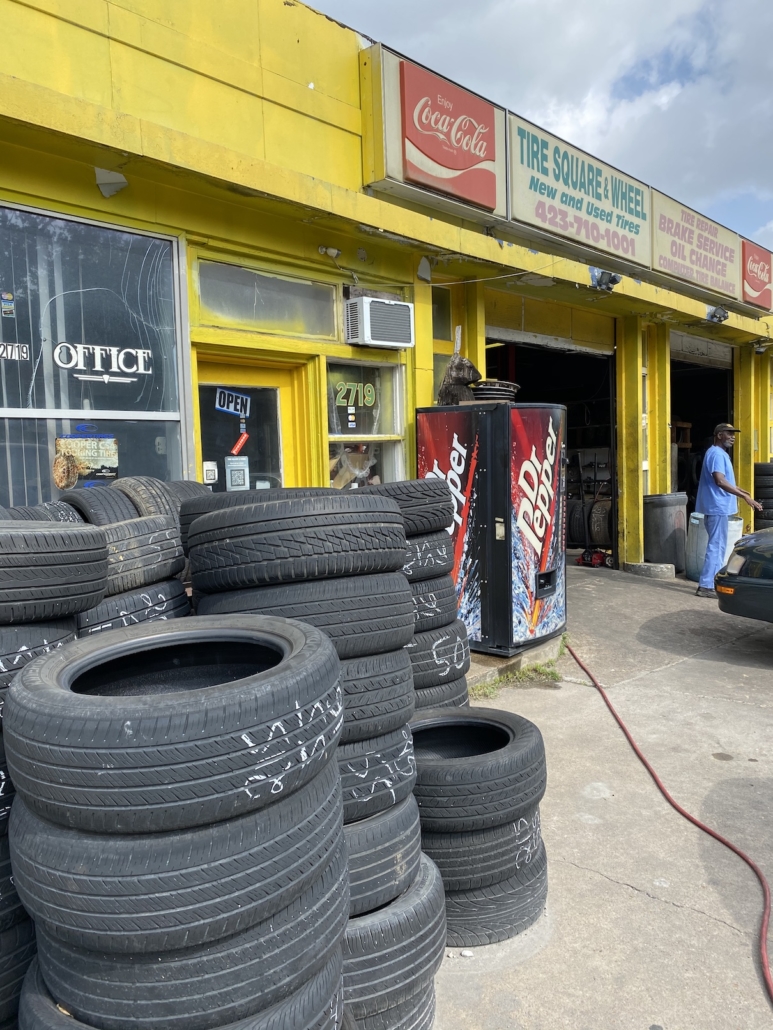Tire Substitute: The Art of Selecting the Right Tire Dimension
Picking the ideal tire dimension is a vital element of maintaining optimal efficiency and safety and security for your lorry. From comprehending exactly how tire size requirements are determined to identifying the impacts of incorrect sizes on your vehicle's handling and performance, the trip to locating the perfect tire dimension is a nuanced one.
Importance of Correct Tire Dimension
Picking the appropriate tire dimension is critical for making sure ideal efficiency, safety and security, and efficiency of your car. One of the vital reasons why tire dimension issues is since it impacts the total handling of your lorry. In terms of safety and security, having the appropriate tire size makes certain that your automobile can efficiently hold the road, brake effectively, and maneuver efficiently to prevent mishaps.
Elements Influencing Tire Dimension Choice
An essential factor to consider in establishing the suitable tire size for your lorry is comprehending the different aspects that influence this selection. Departing from the suggested tire size can influence the speedometer accuracy, fuel efficiency, and total performance of the car.
Another factor to think about is the kind of driving you do. You may need a tire with a different dimension or tread pattern compared to somebody that largely drives on freeways if you often drive off-road or in challenging weather condition problems. The surface you drive on likewise contributes in figuring out the excellent tire size. As an example, bigger tires with a more aggressive step pattern might be needed for rough or sloppy surface.
Furthermore, the size of your wheels can limit the choices for tire dimensions. It's important to make sure that the tires you choose work with your wheels to stop any safety hazards or efficiency concerns. By very carefully considering these factors, you can pick the ideal tire size that finest matches your driving needs and lorry requirements.
Understanding Tire Size Specifications
Tire size requirements provide essential details pertaining to the measurements and attributes of a tire. Recognizing these specifications is important for choosing the right tire for your vehicle. The tire size is generally presented on the sidewall of the tire and is represented by a mix of numbers and letters. A typical tire size requirements can be P215/65R15. In this example, "P" signifies the tire kind, "215" represents the tire width in millimeters, "65" is the aspect ratio (the proportion of the tire's height to its width), and "15" shows the size of the wheel in inches that the tire is created to fit.
Furthermore, tire size requirements might include load index and rate ranking. The lots index suggests the maximum weight a tire can sustain, while the speed rating indicates the Going Here maximum speed ability of the tire. By understanding these requirements, you can make certain that the tires you select are compatible with your vehicle's needs and supply optimal performance and security on the roadway.
Impacts of Incorrect Tire Size
Wrong tire sizes can also influence gas performance. Making use of tires that are not suited for your lorry can alter the speedometer reading, resulting in unreliable gas mileage estimations. In addition, mismatched tire dimensions can put added strain on the engine and transmission, potentially reducing the overall fuel economy of the automobile.

Tips for Choosing the Right Tire Dimension
Selecting the suitable tire size for your vehicle is vital for guaranteeing optimum performance and security on the roadway. To aid in selecting the right tire size, think about the following tips. By complying with these tips, you can select the best tire dimension to enhance your car's efficiency and security.
Conclusion
In verdict, selecting the proper tire size is essential for making certain ideal efficiency and safety of a vehicle. Variables such as car kind, driving conditions, and maker referrals must be considered when choosing the right tire dimension.
From recognizing how tire size specifications are figured out to acknowledging the results of inaccurate sizes on your automobile's handling and effectiveness, the trip to finding the best tire size is a nuanced one.Tire dimension specifications offer important information regarding the dimensions and features of a tire. The this content tire dimension is usually presented on the sidewall of the tire and is represented by a combination of numbers and letters. morris tires. In this instance, "P" denotes the tire type, "215" represents the tire width in millimeters, "65" is the element ratio (the page ratio of the tire's elevation to its width), and "15" indicates the size of the wheel in inches that the tire is made to fit
Tires that are too small might result in reduced stability, especially during high-speed maneuvers, while extra-large tires can cause massaging versus the automobile's body parts, leading to potential damage.